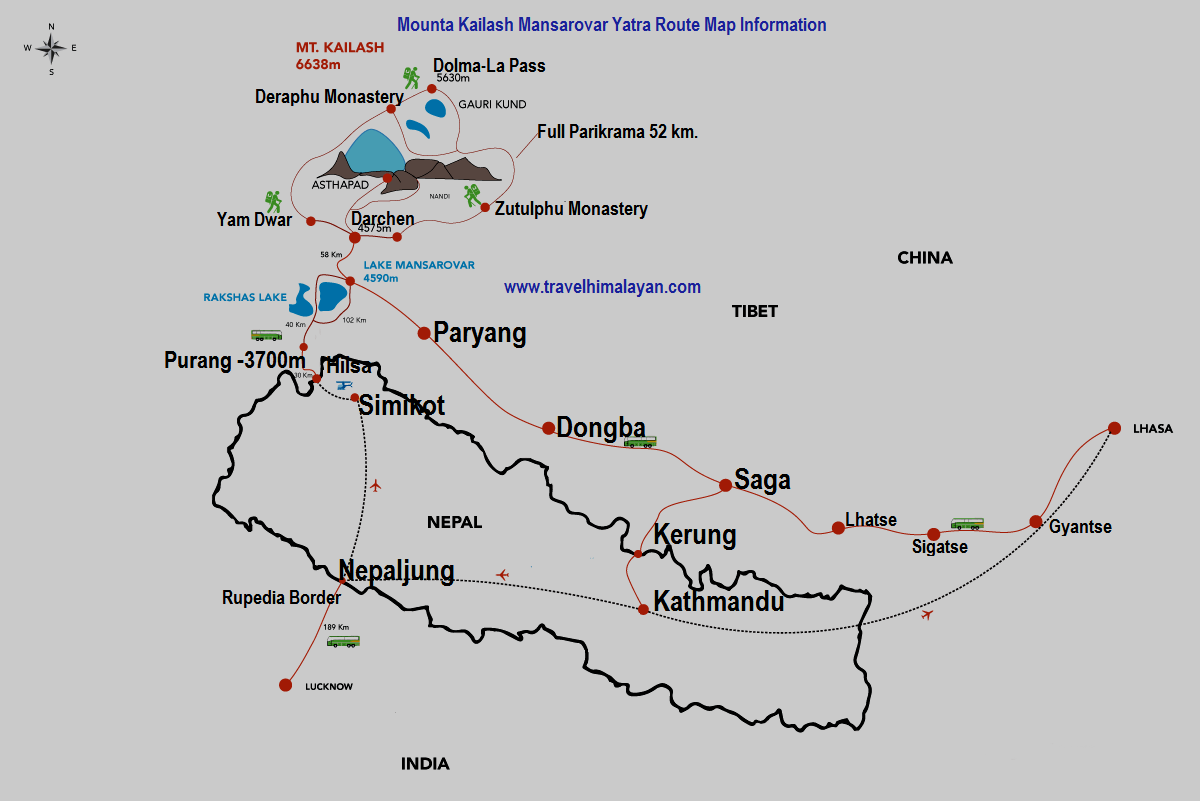Embarking on a spiritual journey to Kailash Mansarovar is a dream for many. Nestled in the majestic Himalayas, this sacred site is revered by millions. As someone who has walked this extraordinary path, I want to share my experience along with tips, pros and cons, and essential travel information to help you plan your pilgrimage.
Why Visit Kailash Mansarovar?
Kailash Mansarovar is not just a destination; it’s an experience that combines spirituality, serenity, and adventure. Here are a few reasons why this journey is worth it:
- Spiritual Significance: Hindus, Buddhists, Jains, and Bonpo practitioners consider it to be the abode of the Gods.
- Beautiful Landscapes: The natural beauty around Kailash and Mansarovar is breathtaking, featuring pristine lakes and towering peaks.
- Cultural Experience: Engage with locals and experience the unique culture of the Tibetan plateau.
Planning Your Trip to Kailash Mansarovar
Before embarking on this journey, careful planning is essential. Here’s a guide to help you through.
Best Time to Visit
The best time to visit Kailash Mansarovar is during the summer months, from May to September. The weather is relatively stable, with daytime temperatures ranging from 15°C to 20°C. Monsoon rains and winter snows can disrupt travel plans, so plan accordingly.
Duration of the Trip
A typical pilgrimage can take anywhere from 15 to 20 days, depending on your route and pace. My journey took 18 days, a perfect balance that allowed for acclimatization and exploration.

Getting There
You can reach Kailash Mansarovar by various means:
- By Air: Fly to Kathmandu, Nepal.
- By Road: Travel from Kathmandu to the Tibet border and then proceed to Mansarovar.
- By Trekking: For the adventurous, you can trek from Nepal directly.
Travel Routes and Options
There are primarily two routes for your Kailash Mansarovar journey:
- Nepal Route: Most popular; begins in Kathmandu.
- India Route: Starts from the Indian state of Uttarakhand.
The Nepal route is less strenuous and offers better facilities, making it ideal for most travelers.
Travel Requirements
Permits and Documentation
Traveling to Kailash Mansarovar requires several permits and documentation:
- Tibet Travel Permit: Mandatory for entering Tibet.
- Visa for China: Apply in advance to avoid last-minute hassles.
- ID Proof: Carry multiple copies of your ID for verification.
Health and Fitness
Prepare yourself physically for the trek. While I had a decent fitness level, the high altitude challenged me. Here are some tips for preparation:
- Exercise Regularly: Build stamina through cardio and strength training.
- Acclimatization: Arrive a few days early to help your body adjust.
- Stay Hydrated: Altitude sickness is common, so drink plenty of water.

Essential Packing List
Having the right gear is crucial for your Kailash Mansarovar journey. Here’s a comprehensive packing list:
| Item | Purpose |
|---|---|
| Warm Clothing | Protection against cold weather |
| Comfortable Trekking Shoes | For long treks |
| Water Purification Tablets | Ensure safe drinking water |
| First Aid Kit | For health emergencies |
| Sun Protection (Sunscreen, Sunglasses) | Protection against UV rays |
| Portable Charger | To keep devices powered |
Highlighting the Journey: My Personal Experience
My journey to Kailash Mansarovar was nothing short of transformative. From the moment I arrived in Kathmandu and began to immerse myself in the culture, I felt the excitement building. The sights of the ancient temples and vibrant markets were enchanting. On my journey to Kailash, the landscapes took my breath away—foothills, rivers, and snow-capped peaks.
The feeling of standing at the shores of Lake Mansarovar was surreal. I remember dipping my feet in the crystal-clear waters, feeling an overwhelming sense of peace wash over me. The energy around Mount Kailash is palpable, and as I completed the Kora (the circumambulation of the mountain), I felt a connection to something greater than myself.

Pros and Cons of Traveling to Kailash Mansarovar
Pros
- Spiritual Awakening: Many find a deep sense of purpose and connection.
- Natural Beauty: Experience stunning landscapes.
- Cultural Diversion: Engage with diverse cultures and peoples.

Cons
- Altitude Sickness: Potential health risks due to high altitudes.
- Logistics: Requires meticulous planning and permits.
- Physical Challenge: The trek can be demanding, especially for novices.
Travel Tips for Kailash Mansarovar
In addition to the essentials, here are some travel tips to enhance your journey:
- Join a Group Tour: Consider traveling with a reputable tour operator for safety and support.
- Respect Local Customs: Always be mindful of local traditions and practices.
- Learn Basic Tibetan Phrases: A simple “Tashi Delek” (hello) goes a long way!
Frequently Asked Questions (FAQs)
1. What is the best time to visit Kailash Mansarovar?
The best time to visit is during the summer months, from May to September, when the weather is most conducive for travel.
2. How difficult is the trek around Kailash?
The trek can be challenging due to altitude and terrain. It’s recommended to be in good physical shape and to acclimatize properly.
3. Are there any accommodations available near Mansarovar?
Yes, there are guesthouses and lodges available, but they may be basic. Booking in advance is advisable during peak seasons.
4. What should I do in case of altitude sickness?
Stay hydrated, rest, and descend to a lower altitude if symptoms persist. It’s also advisable to consult with a doctor before the trip.
5. Is it safe to travel to Kailash Mansarovar?
Yes, many travelers visit Kailash Mansarovar yearly. However, it’s essential to follow safety guidelines and travel with a reputable group.
Conclusion
Traveling to Kailash Mansarovar can be one of the most fulfilling experiences of your life. With proper planning, respect for the local culture, and an open heart, this pilgrimage can leave a lasting impact on your spirit. I encourage you to take this journey, embrace the beauty around you, and let the mountains impart their wisdom.